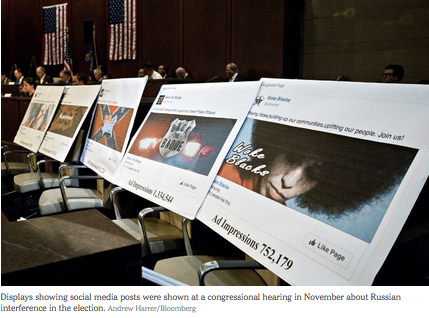WASHINGTON — The indictment of 13 Russians filed on Friday by Robert Mueller, the special counsel investigating Russian efforts to influence the 2016 presidential election, details the secret workings of the Internet Research Agency, an organization in St. Petersburg, Russia, that disseminates false information online. According to American intelligence officials, the Kremlin oversaw this shadowy operation, which made extensive use of social media accounts to foster conflict in the United States and erode public faith in its democracy.
But the Kremlin’s operation relied on more than just its own secrecy. It also benefited from the secrecy of social media platforms like Facebook and Twitter. Their algorithms for systematically targeting users to receive certain content are off limits to the public, and the output of these algorithms is almost impossible to monitor. The algorithms make millions of what amount to editorial decisions, pumping out content without anyone fully understanding what is happening.
The editorial decisions of a newspaper or television news program are immediately apparent (articles published, segments aired) and so can be readily analyzed for bias and effect. By contrast, the editorial decisions of social media algorithms are opaque and slow to be discovered — even to those who run the platforms. It can take days or weeks before anyone finds out what has been disseminated by social media software.




